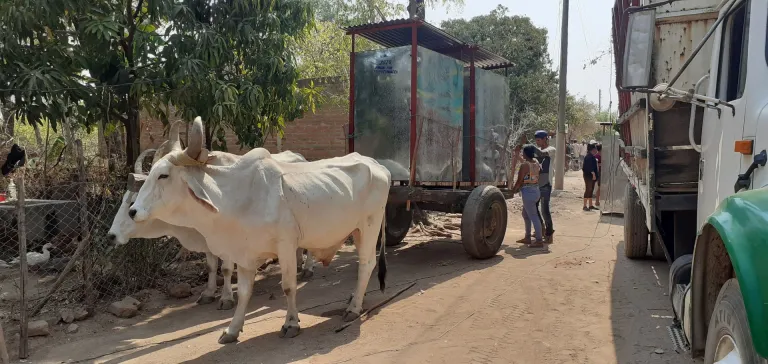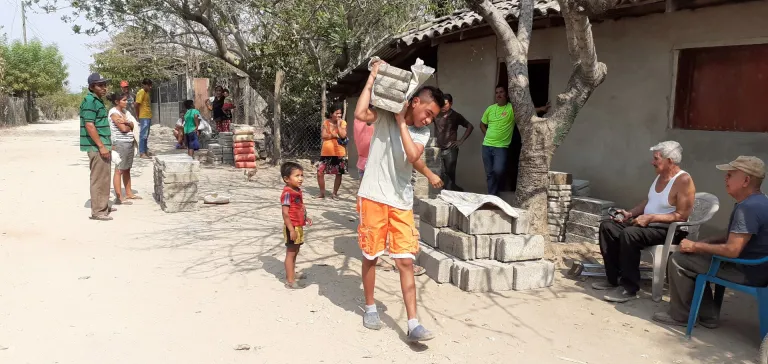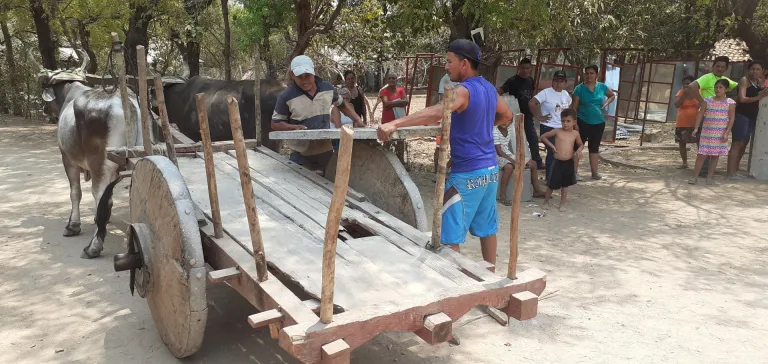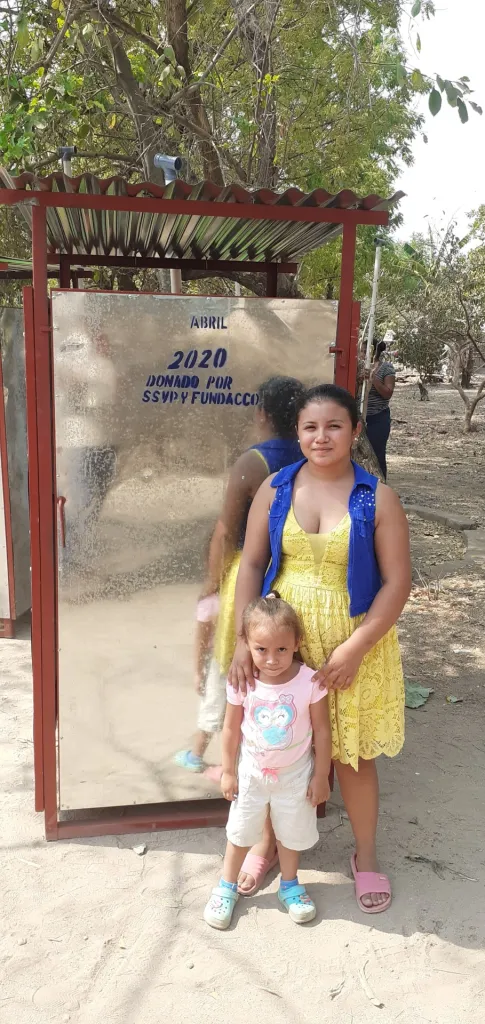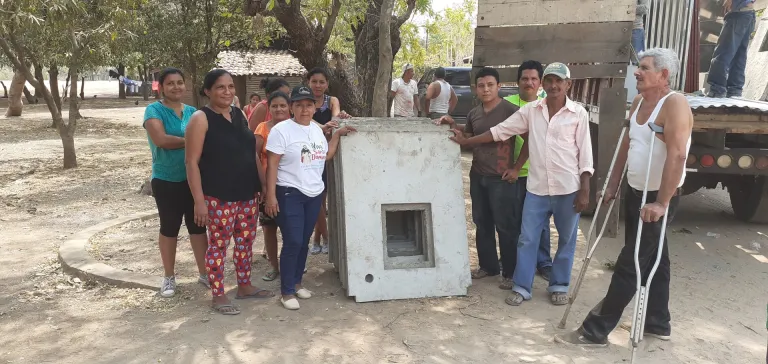Community Sanitation Improvements - San Ramon
- Sep 30, 2020
- 5 min read
Updated: May 25, 2023

FUNDACCO, in association with SSVP’s National Council in Nicaragua, has been providing assistance by identifying needs within the country then developing detailed project proposals to address those needs. The projects are then submitted to the Canadian Council’s Twinning Program for funding.
It was through the generous support of the Ontario Regional Council – SSVP, the Windsor-Essex Central Council and a Vincentian from Ontario that this project was made possible.

The Community of San Ramon
San Ramon is a small community located in the northern part of Nicaragua close to the Honduran border. Initially, the land occupied by this village was a farm owned by Mr. Rodolfo Quintana who went by the name of San Ramon. Mr. Quintana abandoned the property following the Sandinista revolution in 1979.
In 1980, a cooperative was formed by peasants in the area to work the land, which had been idle for many years. It was shortly thereafter, through negotiations with the Ministry of Agricultural Development and Agrarian Reform, that the peasant farmers became legal owners of the lands without fear of being removed by the previous owners.
The land was worked for a number of years, and in 1990 the cooperative was dissolved leaving the remaining members with small plots to work individually.
The community became known as San Ramon and today is made up of approximately 500 families with a total population of around 2800. Many homes in the area house multiple generations of family members due to the financial constraints that exist in this part of the country.
The people of San Ramon have gone through many difficulties over the years without access to the basic benefits that were found in other areas of the country such as electricity, drinking water, sanitary services and health services. It was in 1987 that electricity was brought to the community and in 1990 a gravity fed water distribution network of piping was installed for drinking water.
Sanitary Conditions
The extreme economic limitations over the years have resulted in families focusing on priorities that did not include their basic sanitary needs such as a latrine. Many families live without this luxury which has had a significant impact on the community.
This lack of sanitary conditions and its negative impact on the community include:
A decrease in the health of the general population
Pollution of the environment including air and ground water sources
Privacy of family members when performing physiological needs (they do it in the mountains and country side during low-traffic hours)
People being exposed to insect and other bites that are found in the wooded areas
Suffering from intestinal or bladder diseases due to not having a bowel movement when it is needed.
Some families share the use of latrines but this results in a shorter lifespan of the location due to its increased use.
Project Objectives
The overall objective of this project was to contribute to the health and well-being of the San Ramon community through the implementation of sanitary services infrastructure consisting of the installation 22 latrines. Specifically, the goals were to:
Improve sanitation conditions in the community
Encourage and stimulate human dignity in terms of not having to expose themselves to the environment to look after their basic needs.
Improve the health levels of families affected by the transmission of diseases through contaminated water and disposal of excreta directly into the environment
Justification
It is important to emphasize that this project proposal arises from community members who have formulated the request on behalf of the community and who have made the presentation to FUNDACCO in association with the Nicaraguan National Council of the SSVP for assistance.
Of the families selected to participate in the initiative, only one of them had a latrine which was nearing the end of its use. The rest of the beneficiary families lacked this service, finding themselves in a shameful and forced obligation to use their neighbor’s facilities and in the worst of cases resort to open fields or forested areas.
Project Implementation
As in all projects that FUNDACCO delivers, active participation of the beneficiaries is a requirement and this project was no exception.
The selection of beneficiaries was made by community leaders who knew very well the needs of the people in their community. FUNDACCO, in association with El Bloque, a local organization, was given the task of verifying that each of the selected families met the requirements of the project.
The beneficiary families participated in multiple meetings held by FUNDACCO in the community. The meetings allowed FUNDACCO to:
Get to know the families that participated as beneficiaries of the project
Measure the degree of participation of each of the families involved
Foster solidarity between families
Coordinate actions for the execution of the project
During these meetings families were made aware of their responsibilities in the execution of the project and what their activities would be. Agreements were made with each family as to what their contribution to the project would be, which included:
Excavating a hole of no less than 3 meters where the latrine will be installed
The requirement to collaborate with the mason at the time of construction of the latrine
Each family would receive the same materials to complete their latrine.
That they would be responsible for the care of the materials while the latrine was being built
That they would supply 8 buckets of sand, the amount required during construction
Together with the beneficiary families, a mason from the community was selected to be in charge of the construction of the latrines.
As part of the project, a working committee was formed with a mandate to:
Receive the material in coordination with FUNDACCO
Coordinate construction activities of the mason
Supervise the latrine construction process
Inform FUNDACCO of any problems during execution of the project so that corrective action could be taken
The project was completed in a timely manner following a predetermined schedule thanks to the high level of coordination and communication of the community support team, and the availability of the beneficiaries to work on their latrine.

nitially, the project’s budget allowed for the construction of 18 latrines, however, at the end of the project a total of 22 latrines were built to benefit the same number of families. A discount in the prices of construction materials, the latrine buildings and labour made it possible to extend the project.
Due to the COVID-19 Pandemic, it was not possible to inaugurate the entire project upon completion however the families were able to immediately use their new facilities. The inauguration took place 5 months after the end of the project.
Conclusion
This project was considered a high priority for the community and it was thanks to the support and integration of the beneficiaries that the project was completed on schedule.
Benefits to the community, and in particular, the beneficiaries, resulted in substantial reductions in gastrointestinal diseases, an improvement to the overall health of the community and decreased environmental pollution.
Although a small percentage of people benefited from this project, when there is a significant need in a community it is not hard to find support from the community as a whole and this project was no exception.
